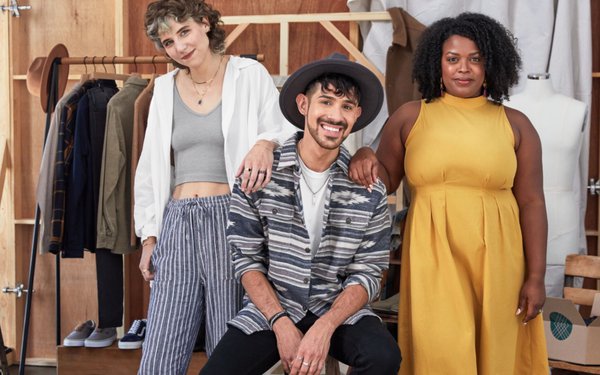Commentary
Freestyle Falters, Leading Stitch Fix To Stumble
- by Sarah Mahoney , Staff Writer @mahoney_sarah, March 14, 2022

Image above: Stitch Fix stylists
Stitch Fix, long a success story for its ability to blend fashion sense with AI-guided product selections, has to rewrite its growth narrative.
The San Francisco-based D2C company announced disappointing second-quarter results and cut its forecast, sending its stock plunging to its lowest levels ever.
For the second quarter of its fiscal year, Stitch Fix says it achieved $517 million in revenue, a 3% gain. And spending per active client topped rose 18% to $549, topping $500 for the third quarter in a row.
But Freestyle, a service recently rolled out to bolster results, is faltering. “While Freestyle revenue grew 29% year on year in the second quarter, we continue to experience challenges with onboarding and conversion of clients, which are not where we want them to be,” said Elizabeth Spaulding, CEO of Stitch Fix, in its announcement.
For the uninitiated, the company’s “Fix” business refers to its core offering: Customers sign up and answer questions about their style preferences. Using information from its vast data collection, human stylists pull together a fashion “Fix” box of assorted items and send it to the customer’s home, where they can try clothes on and decide what to buy and what to send back.
The company began experimenting with Freestyle, which it rolled out last year, as a way to increase incremental sales. The idea was to offer “a differentiated shopping experience where anyone can discover and instantly buy items that are thoughtfully curated for them based on their style preferences, fit and size.”
In other words, for the first time, people could buy an item without ordering a Fix first.
“We remain confident in our long-term strategy and are resolutely focused on building and enhancing the overall client experience for Fix and Freestyle with an emphasis on growing active clients,” added Spaulding.
As a result of the company’s struggles, it lowered its sales outlook and now expects revenues to be flat in the full year ahead, versus an 8% gain.
The news tanked its stock, which fell to less than $11 a share, its lowest level since going public in 2017. In January of 2021, those shares traded at close to $99 per share.
The company also says that as a result, it’s “actively evaluating our marketing spend as we manage improvements to onboarding and conversion.”
Baird, which has a neutral rating on the company, thinks it can solve its problems.
“We continue to believe in the long-term viability of the Stitch Fix model,” writes Mark R. Altschwager, who follows the company for Baird. “With a solid cash balance and disciplined management of variable expenses,” he says, including advertising, the company “has time to get it right.”
But while Freestyle has potential, “the rollout of Freestyle remains a pressure point in the story, as the company works to perfect many aspects of the new feature, with sights on unlocking a larger total addressable market.”



